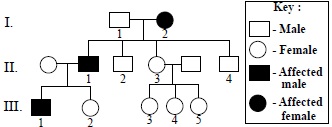Fill in the blanks with most appropriate option.
Bio-gas is an excellent fuel as it contains up to 75% __(i)__ . It burns without smoke, leaves no residue like ash in wood. Its heating capacity is __(ii)__ . The slurry left behind is removed periodically and used as excellent manure, rich in __(iii)__and __(iv)__.
| (i) | (ii) | (iii) | (iv) | |
| A | Methane | High | Nitrogen | Phosphorous |
| B | Nitrogen | Low | Methane | Phosphorous |
| C | Methane | Low | Nitrogen | Oxygen |
| D | Oxygen | High | Nitrogen | Phosphorous |







